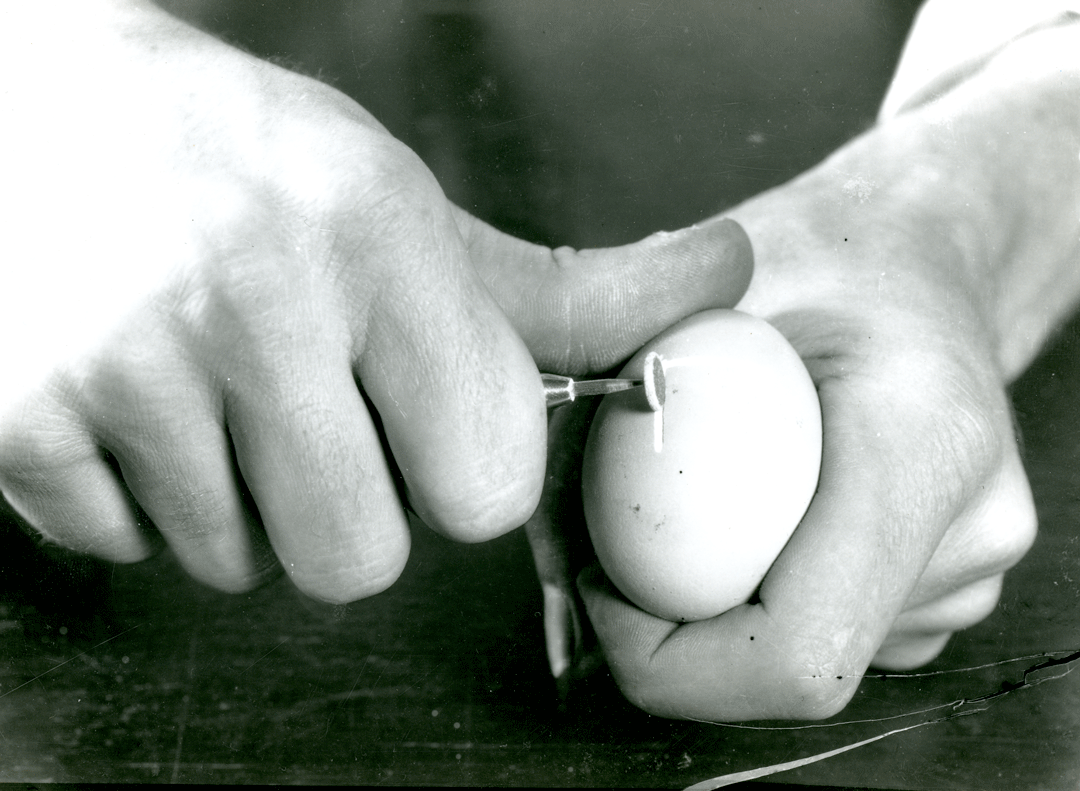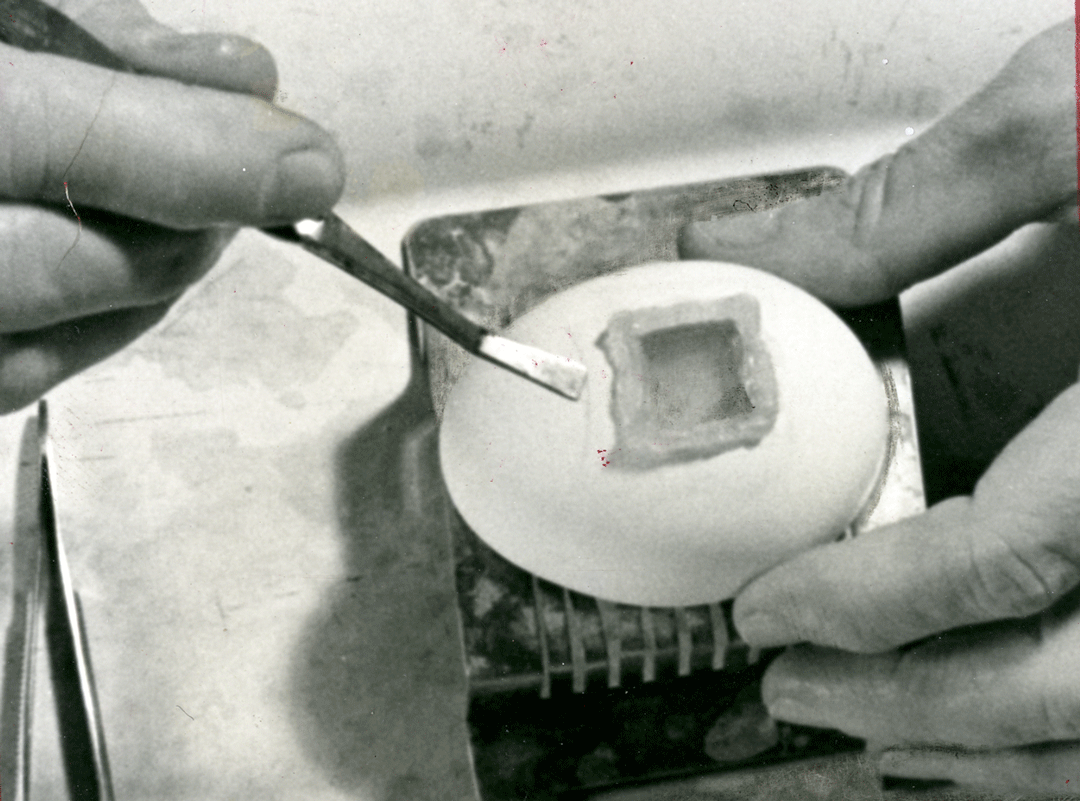An Egg Drill and its Connection with Medical Discovery and Advancement

This simple rotary tool – an egg drill – had a role in saving countless lives. While the understanding that vaccination could protect against lethal diseases dates back to 1796 and pioneering work of English physician Edward Jenner, it was here at Vanderbilt that Dr. Ernest Goodpasture and colleagues Eugene and Alice Woodruff developed the method for growing consistently pure cultures of virus in the volume needed to successfully produce vaccine in mass quantities.
The development of the process dates back to 1924 when Ernest Goodpasture, M.D., was recruited to the newly reorganized Vanderbilt University Medical School as its first chairman of Pathology. With his research interest being the pathology of viruses, he initially studied herpes and rabies before turning his attention to fowlpox. His rationale for the switch was fowlpox did not affect humans and it produced skin lesions in chickens that could be studied systematically. However, before he could expand his research, Goodpasture had to figure out a method for obtaining large quantities of fowlpox virus in pure culture.
The solution came in 1931 when he and his colleagues developed a method for growing the virus in the sterile environment of chicken embryos. The process involved carefully cutting a small window in the eggshell while not damaging the underlying membrane. This membrane was then injected with an isolated strain of fowlpox, and then a piece of glass sealed the opening. Using this chick embryo system, they were able to consistently produce pure cultures of fowlpox, and marked the first time viruses had ever been grown in a reproducible way.

This drill was the very instrument used in the process of preparing the eggs for the production of virus cultures. The photographs from an article published in the Nashville Tennessean in 1955, illustrate the process used.


Keenly aware of the significance of this discovery and its practical application to produce vaccines, Dr. Goodpasture immediately began to work on vaccinia—a close relative of cowpox virus. In 1935, working with the Tennessee State Board of Health, Goodpasture and colleagues vaccinated nearly 1,200 children with the new smallpox vaccine achieving a significant rate of success. Aware of the limitations of a single research laboratory being able to produce vaccines on a large scale, Goodpasture gave the chick embryo technique over to Upjohn Pharmaceuticals to carry out its commercial production and delivery. The chick embryo technique was soon used in the development of vaccines including yellow fever, typhus, an influenza, and still remains the primary method of making vaccines.
Thank you to Christopher Ryland, curator of History of Medicine Collections and Archives, and Jim Thweatt, archivist, for providing the text and images.